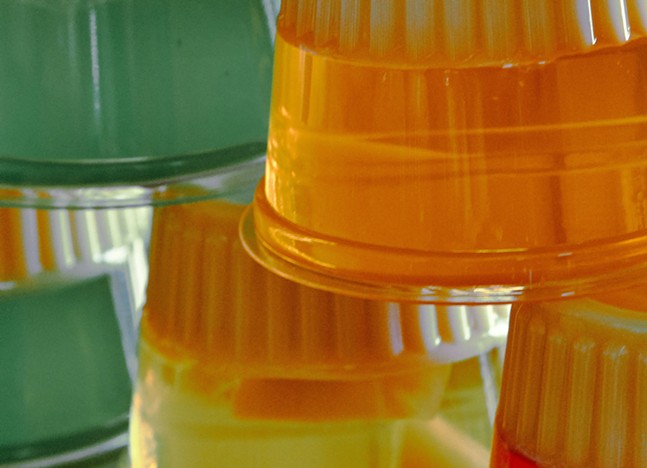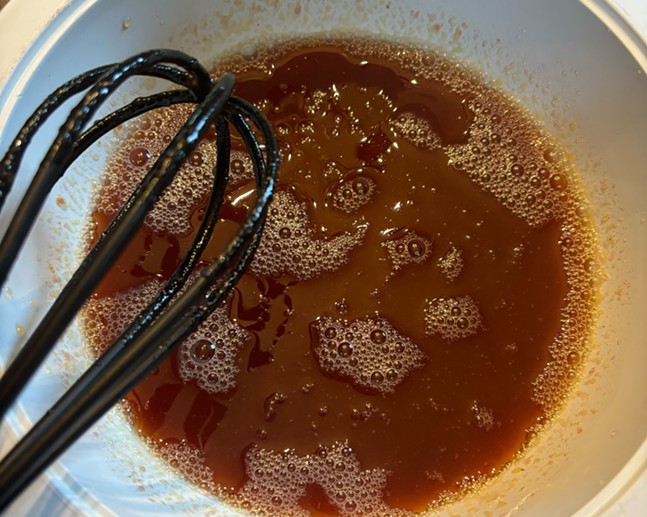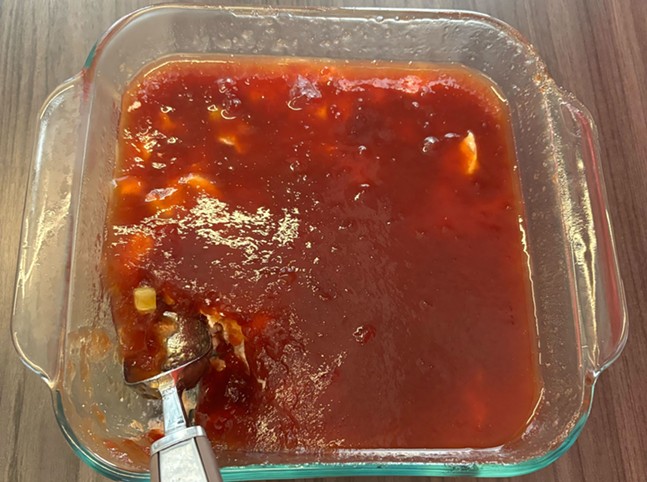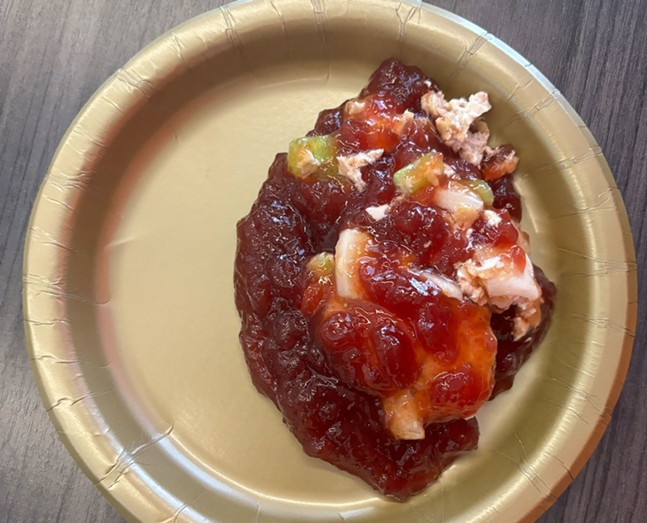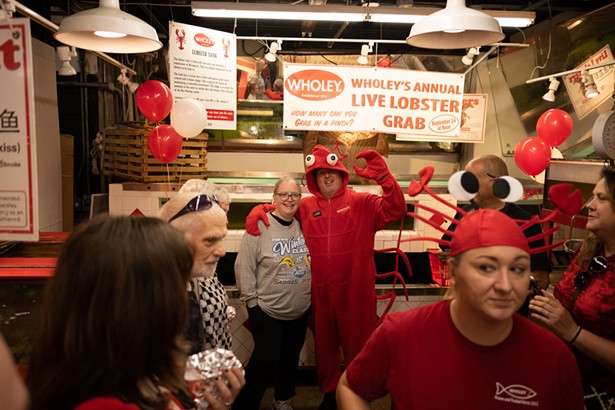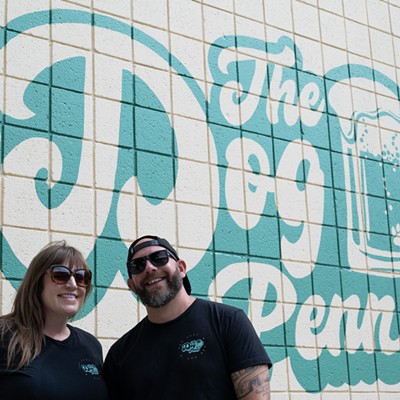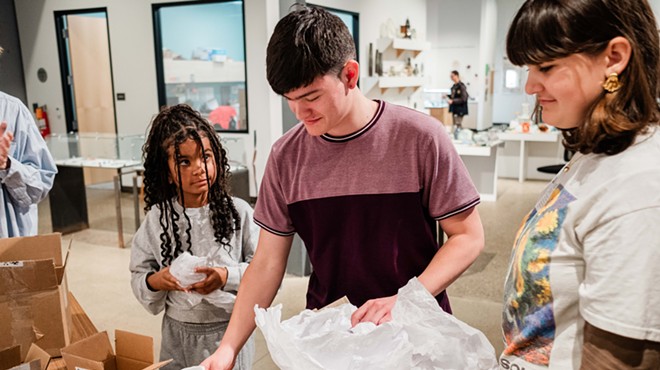Many nostalgic recipes are wonderful. Others are terrifying. Today, I’ll be making a Cranberry Tuna Mold by Mrs. E. S. Henry Jr. from 1973.
To be fair, there were plenty of delicious foods served at 1970s dinner parties. Thumbing through my Three Rivers Cookbook, Vol. I — the very volume that holds this recipe — I see dozens of dishes that appear downright delectable. But if you look at some of the photos on the popular Instagram page @70sdinnerparty, it looks as if every platter whipped up in the decade of Watergate was a kitchen nightmare.
I have questions. First, why were so many 1970s dishes made with gelatin? Also, what’s up with the presentation?
Let’s start with the gelatin. Jell-O was trademarked in 1904 as “America’s Most Famous Dessert.” Ads with colorful images of creative Jell-O molds as well as marketing language praising Jell-O for its versatility made it an approachable product for everyone. The University of Michigan Library even commemorated early Jell-O ads in a beautiful online exhibition.
Gelatin was cheap, kept foods fresher longer (which was great during the 1900s - early 1940s when many homes didn’t have a refrigerator), and made for some interesting presentation. An article by Serious Eats states that in the 1930s, salads made with lime Jell-O mixed with savory vegetables and meats were a go-to dish for their affordability and ability to stretch out ingredients as much as possible and for as long as possible. However, by 1944, about 85% of private homes had a working refrigerator, and families had more income and resources. And by the 1970s, refrigerators had become even better and more efficient.
So why then were Jell-O and gelatin dishes so popular in the 1970s? Nostalgia, for one. Many women re-created their mother’s and grandmother’s aspic (a fancy French word for gelatin-meat stock) recipes. For another thing, according to the same article by Serious Eats, Jell-O was on the decline in the ’70s. A marketing campaign that placed nostalgic recipes on boxes and in eye-catching magazine ads helped boost Jell-O’s popularity and kept the brand from sinking.
As for the presentation, can we blame our foremothers? It was wonderfully weird to see foods suspended in a sliceable mold.
For the Cranberry Tuna Mold from 1973, I used the following ingredients:
- 1 env. Knox unflavored gelatin
- ¼ cup cold water
- ¼ cup boiling water
- 2 cans tuna
- 1 cup mayonnaise
- 1 cup chopped celery
- 1 onion, chopped
- 1 box lemon Jell-O
- ¾ cup boiling water
- 1 can whole cranberry sauce
- ¼ cup orange juice
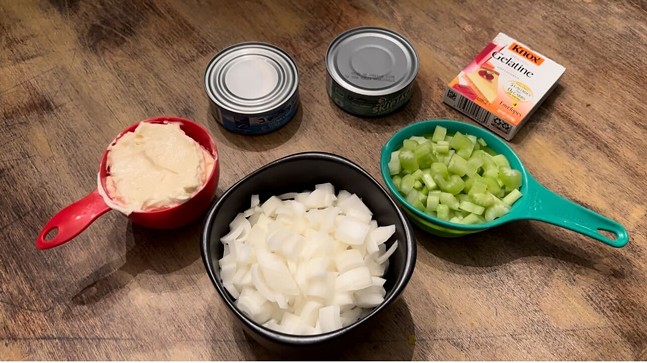
The next morning, I put the kettle on again and gathered my lemon Jell-O, cranberry sauce, and OJ. I emptied the cranberry juice, orange juice, and Jell-O packet into my mixing bowl, then added boiling water and stirred (Note: there is nothing appetizing about the color of this topping).
I let it set in my refrigerator for about an hour, then I brought it down to the Pittsburgh City Paper office and let it chill in our fridge here until lunchtime, about three hours. I figured this would be a good one to share with the crew. They declined.
Bravely, I took a few bites. This recipe is disjointed at best; terrible at worst. First, there’s way too much crunch. Nobody needs that many onions and celery chunks in a Jell-O recipe. On a positive note, the topping was good. So a dessert made with just the topping might be a win.
To be fair Mrs. E. S. Henry Jr., I’ve seen family photos from my own family’s gatherings in the 1970s and ’80s, and the food wasn’t pretty. Not to mention the centerpeice — a hubcap-sized amber glass ashtray filled with lipstick-coated cigarette butts, and a peppering of empty Miller High Life and Bartles & Jaymes bottles. It’s no wonder nobody could taste the subtle — or not-so-subtle — imbalances of flavor in the party spread back then.


